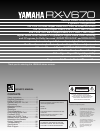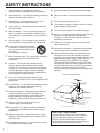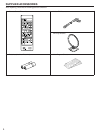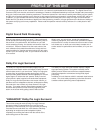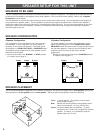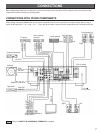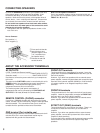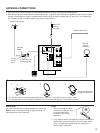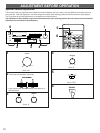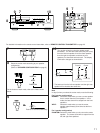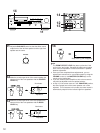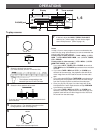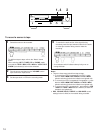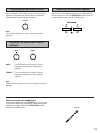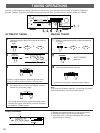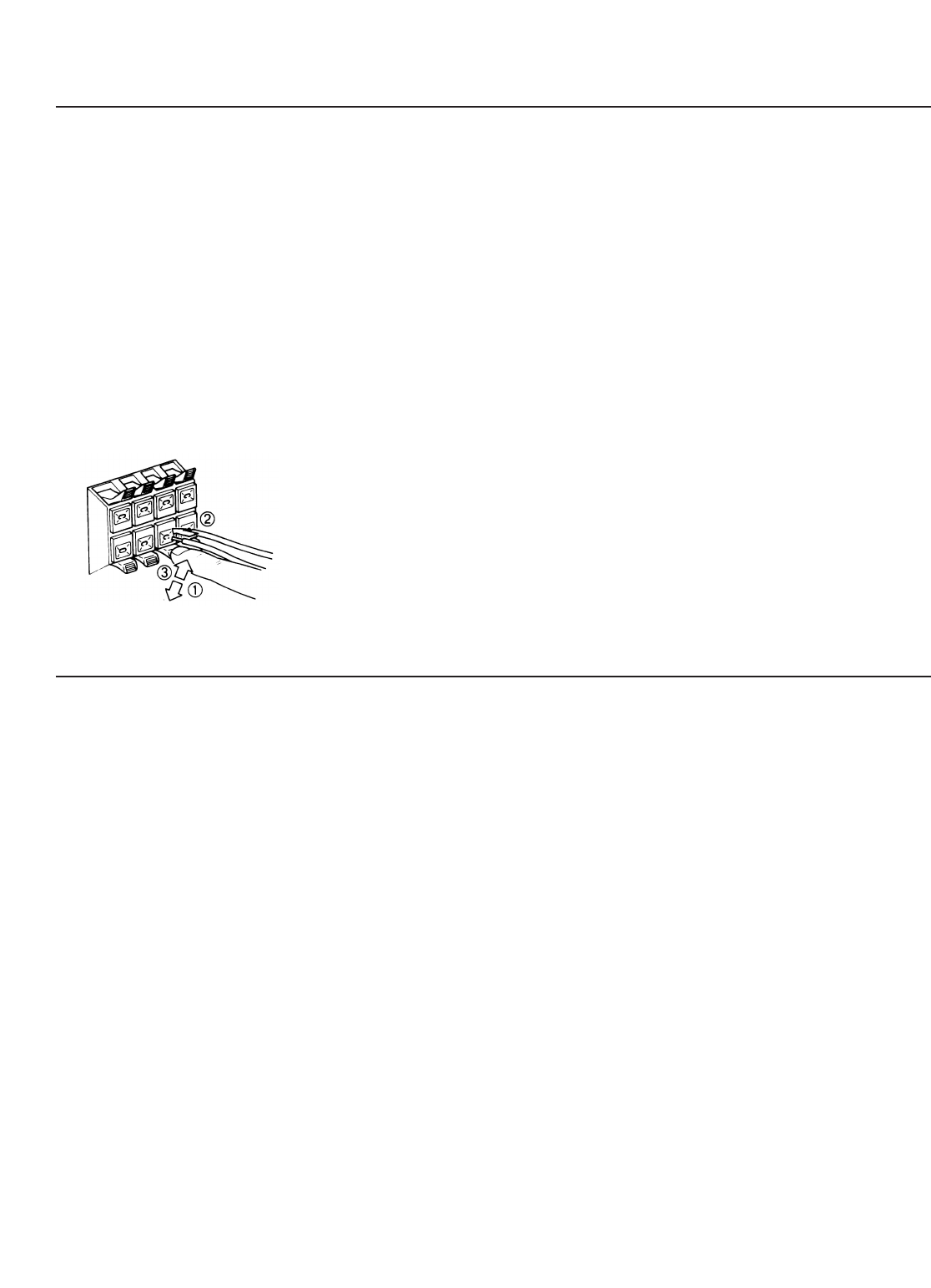
8
Connect the SPEAKERS terminals to your speakers with wire
of the proper gauge, cut to be as short as possible. If the
connections are faulty, no sound will be heard from the
speakers. Make sure that the polarity of the speaker wires is
correct, that is, + and – markings are observed. If these wires
are reversed, the sound will be unnatural and will lack bass.
Do not let the bare speaker wires touch each other and do
not let them touch the metal parts of this unit as this could
damage this unit and/or speakers.
●
Use speakers with the specified impedance shown on the
rear of this unit.
How to Connect:
Red: positive (+)
Black: negative (–)
➀ Press and hold the tab.
➁ Insert the bare wire.
[Remove approx. 5mm
(1/4”) insulation from
the speaker wires.]
➂ Release the tab and
secure the wire.
Note for front speaker connection:
One or two speaker systems can be connected to this unit. If
you connect only one speaker system, connect it to either the
FRONT A or B terminals.
CONNECTING SPEAKERS
ABOUT THE ACCESSORY TERMINALS
AC OUTLETS
(U.S.A., Canada and General models)
.......................................................... 2 SWITCHED OUTLETS
(Australia model).................................. 1 SWITCHED OUTLET
Use these to connect the power cords from your components
to this unit.
The power to the SWITCHED outlets is controlled by this unit’s
POWER switch or the provided remote control transmitter’s
POWER key. These outlets will supply power to any
component whenever this unit is turned on.
The maximum power (total power consumption of
components) that can be connected to the SWITCHED AC
OUTLETS is 100 watts (80 watts for Canada model).
REMOTE CONTROL (PHONO) connector
If you have a YAMAHA turntable with the terminal for remote
control, connect it to this connector by using the cable provided
with the turntable. This connection allows you to control the
turntable from the provided remote control transmitter.
GND terminal (For turntable use)
Connecting the ground wire of the turntable to this terminal will
minimize hum, but in some cases better results may be
obtained with the ground wire disconnected.
FRONT OUT terminals
These terminals are for front-channel line output. Leave the
jumper bars connected to FRONT IN terminals when you use
the built-in amplifier.
However, if you drive front speakers with an external stereo
power amplifier, remove the jumper bars and connect the input
terminals of the external amplifier (MAIN IN or AUX terminals
of a power amplifier or an integrated amplifier) to these
terminals.
FRONT IN terminals
These terminals are for line input to the built-in front-channel
amplifier. Leave the jumper bars connected to FRONT OUT
terminals when you use the built-in amplifier.
However, if you drive front speakers with an external stereo
power amplifier, remove the jumper bars.
EFFECT OUT (REAR) terminals
These terminals are for rear-channel line output. There is no
connection to these terminals when you use the built-in
amplifier.
However, if you drive rear speakers with an external stereo
power amplifier, connect the input terminals of the external
amplifier to these terminals.
If you use the built-in amplifier and the external power amplifier
at the same time, the sound will be output through both
speakers.



